Our industry is engaged in an important dialogue to improve the efficiency and resilience of real assets through transparency and industry collaboration. This article is a contribution to this larger conversation and does not necessarily reflect GRESB’s position.
Data centers are the backbone of the digital economy. With soaring data consumption and accelerating AI adoption, the worldwide data center market continues to experience robust growth, projected to maintain a CAGR of 12% over the next decade. While the United States currently leads in terms of total GW of data center capacity, holding 40% share of the global market, the Asia-Pacific region is emerging as the fastest growing market, poised to double its capacity by 2030.
Asia’s data center boom
The Asia-Pacific region is experiencing a seismic shift in the data center landscape. Established markets like Hong Kong, Singapore, South Korea, Japan, and China are already flourishing, but it’s the emerging markets in Southeast Asia – Thailand, Indonesia, Malaysia, and the Philippines – that are primed to ignite the region’s explosive growth.
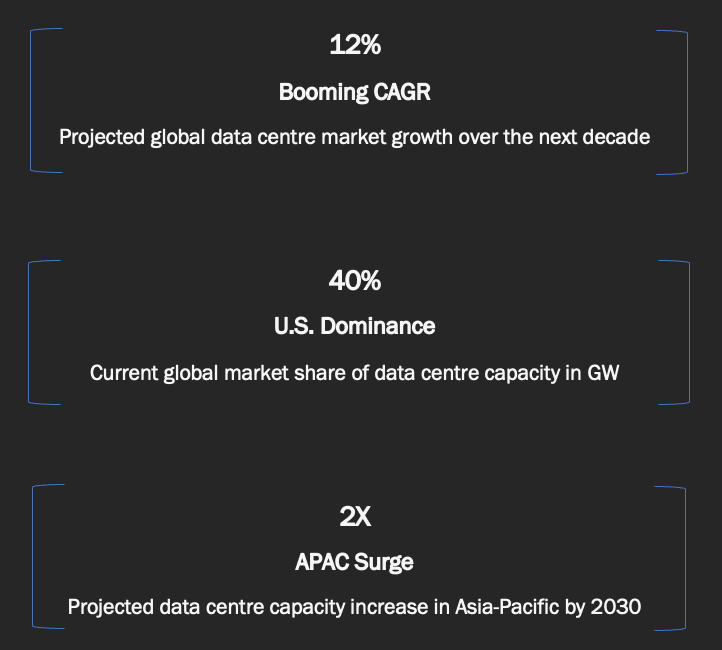
However, this data center expansion faces a daunting challenge: reliable power supply in a world of extreme weather events. Ensuring consistent power supply remains a major challenge for data centers in the U.S., across Asia, and particularly in Southeast Asia’s emerging markets. Compounding the issues around the acquisition of reliable power sources are the increasing risks associated with climate change-driven extreme weather events, which are becoming more frequent and severe than ever before. Scorching heat waves in Southeast Asia, for example, are driving up cooling demands and exacerbating the power crunch. Overcoming these climate-driven obstacles will be critical to unlocking Asia’s full data center potential.
The financial impact of extreme weather
While the power challenge in the data center sector is well-documented, current and future extreme weather impacts are far less analyzed and understood. The increasing intensities, durations, and severities of acute climate-related hazards such as rainfall-induced floods and typhoons (tropical cyclones) may cause equipment damage and facility disruption, while heatwaves may increase cooling demand and in some cases cause systems to fail, leading to temporary shutdowns.
Revenue Loss
An analysis by asset management firm Impax and the UK center for Greening Finance and Investment estimated that extreme heat may result in an expected average revenue loss of around USD 30 million per year by 2050 across the data centers of two operators in Asia.
Insurance Costs
Adding to the financial burden is the as-yet uncertain impact of extreme weather on insurance costs, which, without climate adaptation investments to protect the asset, could triple or quadruple by 2050.
Such ‘digital downtimes’ can be costly, with significant implications for both operators and the businesses that rely on these facilities. The combination of revenue losses and increased insurance premiums creates a compelling financial case for climate adaptation investments.
Intensel’s Climate Risk Assessment
To better understand this risk, Intensel conducted an assessment of 28 operational and planned data centers across eight cities in Southeast Asia, drawing on its proprietary climate risk analytics. The analysis investigated a comprehensive set of 12 climate perils, including rainfall flood, river flood, storm surge, wildfire, typhoons, water stress, extreme heat, drought, and sea level rise.
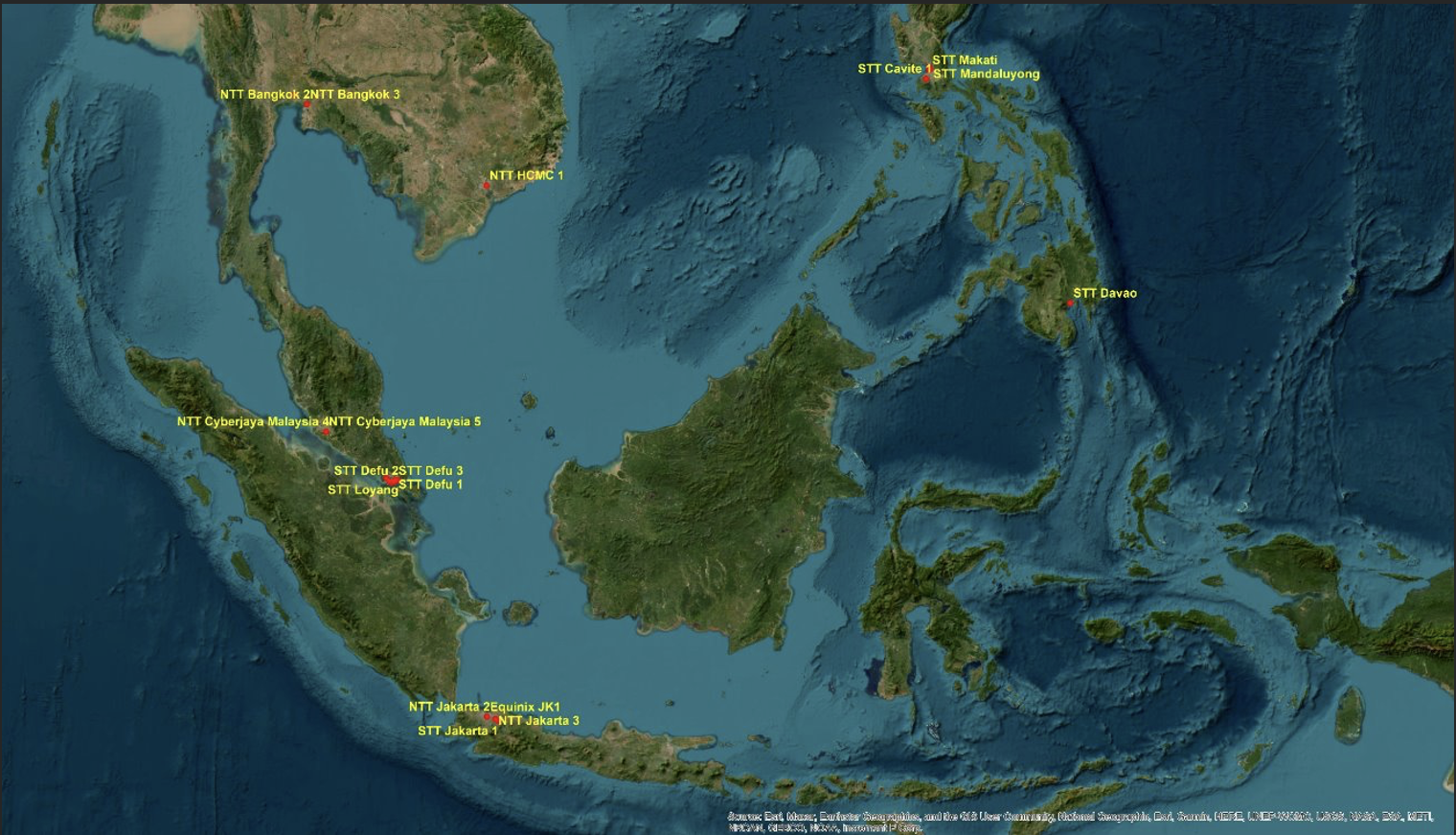
Under a high emissions scenario (SSP 5-8.5), Intensel’s analysis determined that water stress and extreme heat are the two most pronounced physical climate risks facing data centers in Asia. This assessment provides crucial insights for data center operators to develop targeted resilience strategies for their specific locations.
Source: Intensel Limited
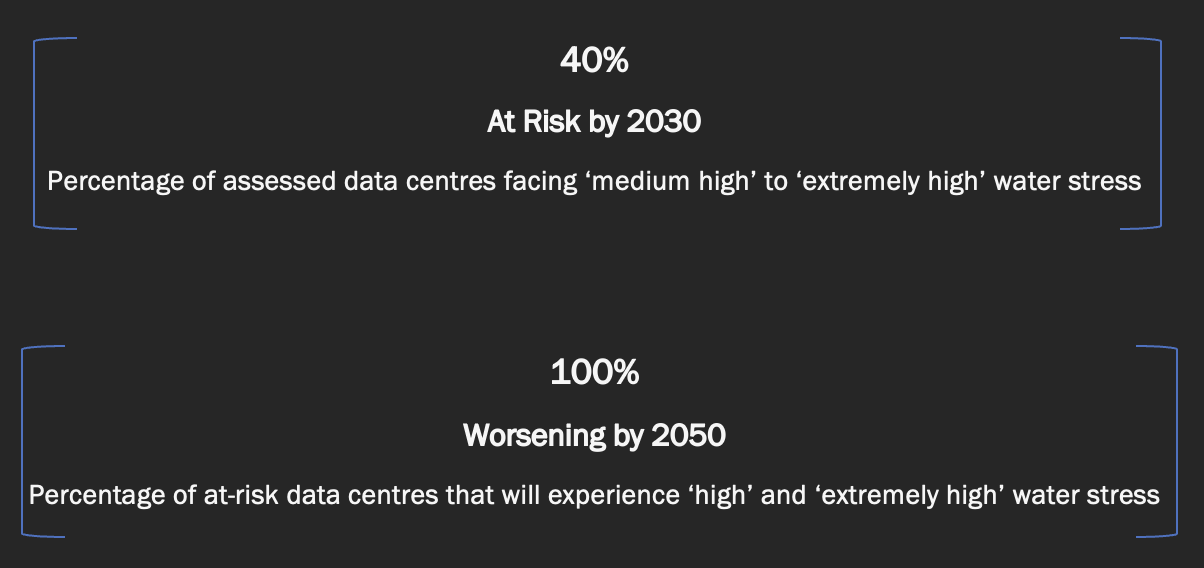
Water stress: A critical challenge
Water is crucial for efficient data center operations, as it is required for cooling IT equipment. The massive consumption of water from data centers, however, can strain local water resources and compete with other industries and communities that rely on local water resources. This has the potential to create community conflicts, resulting in social license to operate and government relations business risk.
Water stress is defined as the ratio of total water demand to the total water available. If data centers are built in locations with existing or future water stress, operational and/or reputation risk is possible.
In the sample of Southeast Asian data centers that Intensel assessed, water stress presented significant risk to multiple data centers and operators:
- By 2030, 11 of the 28, or roughly 40%, of the data centers will face ‘‘medium high’’ to ‘‘extremely high’’ water stress
- By 2050, water stress will increase even further, resulting in all 11 of the previously identified data centers experiencing ‘‘high’’ and ‘‘extremely high’’ degrees of water stress
- Water stress was found to be severe in Thailand, Indonesia, and parts of the Philippines
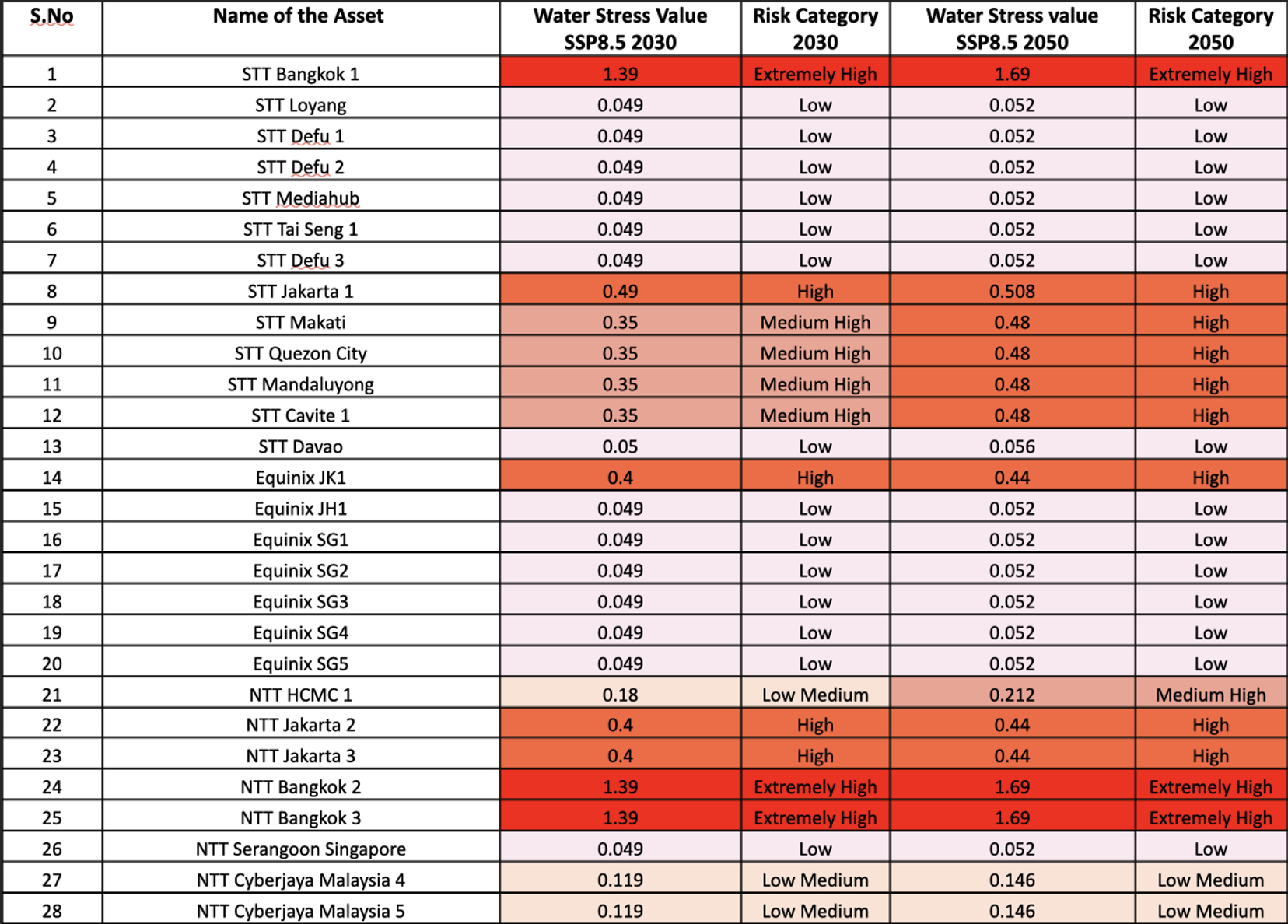
The table above is a water stress analysis for each individual data center in the sample set, under a ‘‘business-as-usual’’ high emissions scenario (SSP 5-8.5) in 2030 and in 2050. The progression from yellow to deep red indicates worsening conditions, with some locations showing dramatic increases (in some cases as much as 37%) in water stress severity over the next twenty-five years.
Source: Intensel Limited
Extreme heat: Compounding the challenge
The need for water cooling, and thus water consumption, increases in areas experiencing chronic extreme heat. This is a significant challenge for data centers located in Southeast Asia. In our sample analysis of 28 assets, extreme heat is expected to increase in all locations over the coming two decades.
- Extreme heat as a ‘moderate-high’ chronic hazard poses risks to all data centers in emerging markets in Asia, with maximum extreme heat values ranging from 40.8 to 49.9 degrees Celsius.
- Extreme heat may increase by as much as 37% between now and 2050 under a business-as-usual (SSP 5-8.5) climate scenario.
This trend will compound the pressure to acquire reliable power sources, as power requirements increase to sustain optimal conditions for data center operations. From a climate management perspective, this is a double-edged sword, as the need for greater amounts of energy to reduce high operating temperatures counters decarbonization efforts.
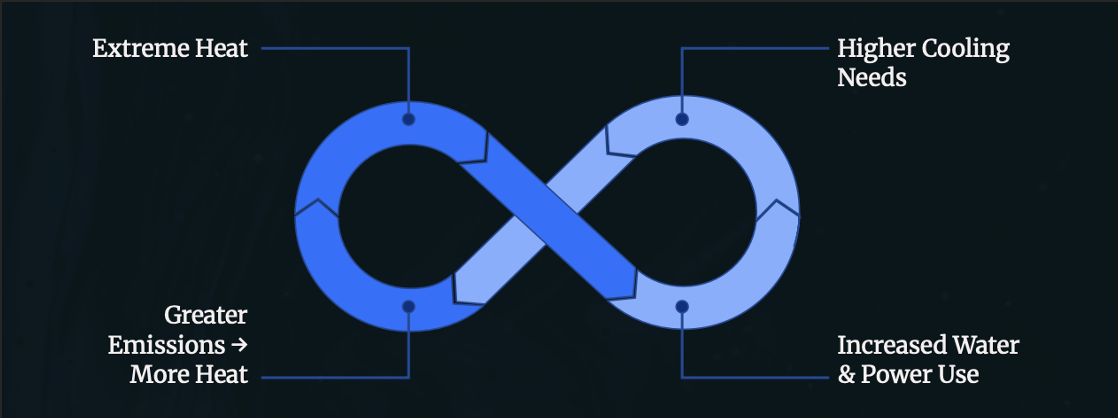
Source: Intensel Limited
Acute climate risks: Location-specific threats
While extreme heat impacts all of the data centers in the sample, acute risks, such as rainfall flood and typhoon, are less prevalent in this sample and highly dependent on specific geolocations.
By 2030, the 28 centers may encounter ‘‘moderate’’ to ‘‘high’’ exposure to rainfall floods, river floods and typhoons across specific sites given their geographical locations.
Rainfall floods
There are 11 sites across Singapore, Ho Chi Minh City, Bangkok, Jakarta, Manila and Davao with ‘‘medium’’ to ‘‘high’’ flood risk, resulting in potential flood inundation depths in Jakarta and Davao reaching greater than two meters.
Typhoons
There are five sites across the Philippines with ‘‘high’’ and ‘‘very high’’ risk, potentially facing winds in excess of 250 km/h. Super Typhoon Ragasa, which passed through the northern Philippines this week, hit this level and is the strongest recorded typhoon (hurricane) on Earth this year.
Multiple perils
There is one site in Ho Chi Minh City that is exposed to ‘‘high’’ levels of multiple climate perils, including storm surge, river flood, rainfall flood, extreme heat, and water stress.
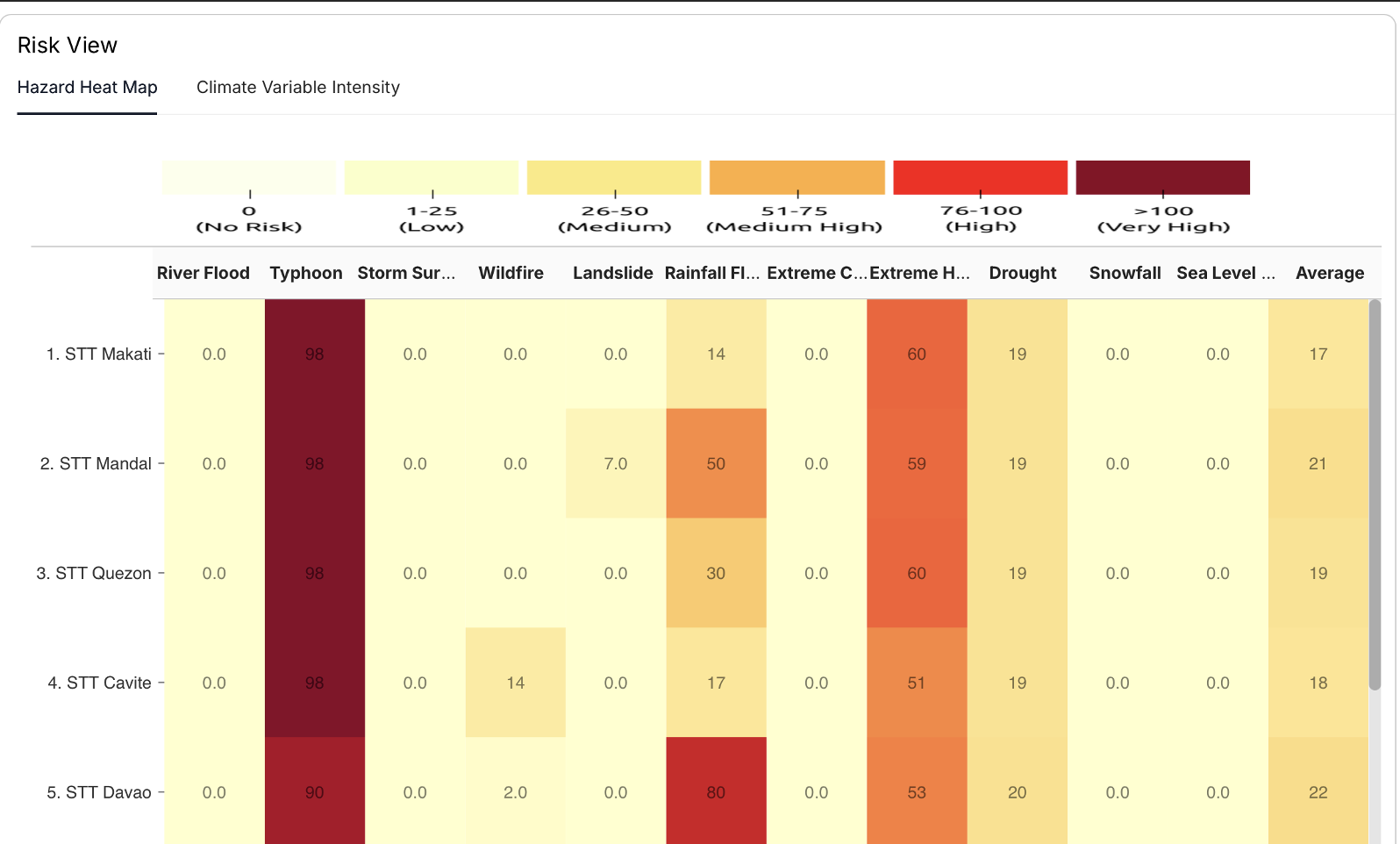
The climate hazard heat map above indicates hazard severity for each of the 12 hazards analyzed at each individual data center under a ‘business-as-usual’ high emissions scenario (SSP 5-8.5). The concentration of red and orange cells in certain locations highlights the compounding risks faced by specific data centers, while others show a more moderate risk profile across multiple hazards.
Source: Intensel Limited
Investing in climate adaptation
Data centers will require targeted climate adaptation investments to build resilience to current and future extreme weather events. Some examples of high-risk hazards, such as water stress and rainfall floods, include the following:
Water stress adaptation
- Implementation of water-efficient cooling technologies
- Water recycling and treatment systems
- Alternative cooling methods like air-cooled systems
- Strategic partnerships with local water authorities
Each solution presents trade-offs between water usage, energy efficiency, and operational costs that must be carefully evaluated.
Flood protection measures
- Elevated building foundations (plinth height)
- Waterproof barriers and floodgates
- Improved drainage systems
- Redundant power and cooling systems
- Strategic equipment placement above flood levels
Adaptation options for acute perils like rainfall or river flooding (i.e., moveable flood walls, plinth height increases for new developments, surrounding area drainage, etc.) are well identified but can be costly and rely on an evaluation of both surrounding area and asset-level flood risk and mitigations. Granular asset and surrounding area flood maps are useful tools to understand flood risk under different scenarios and intensities to better understand flood adaptation options.
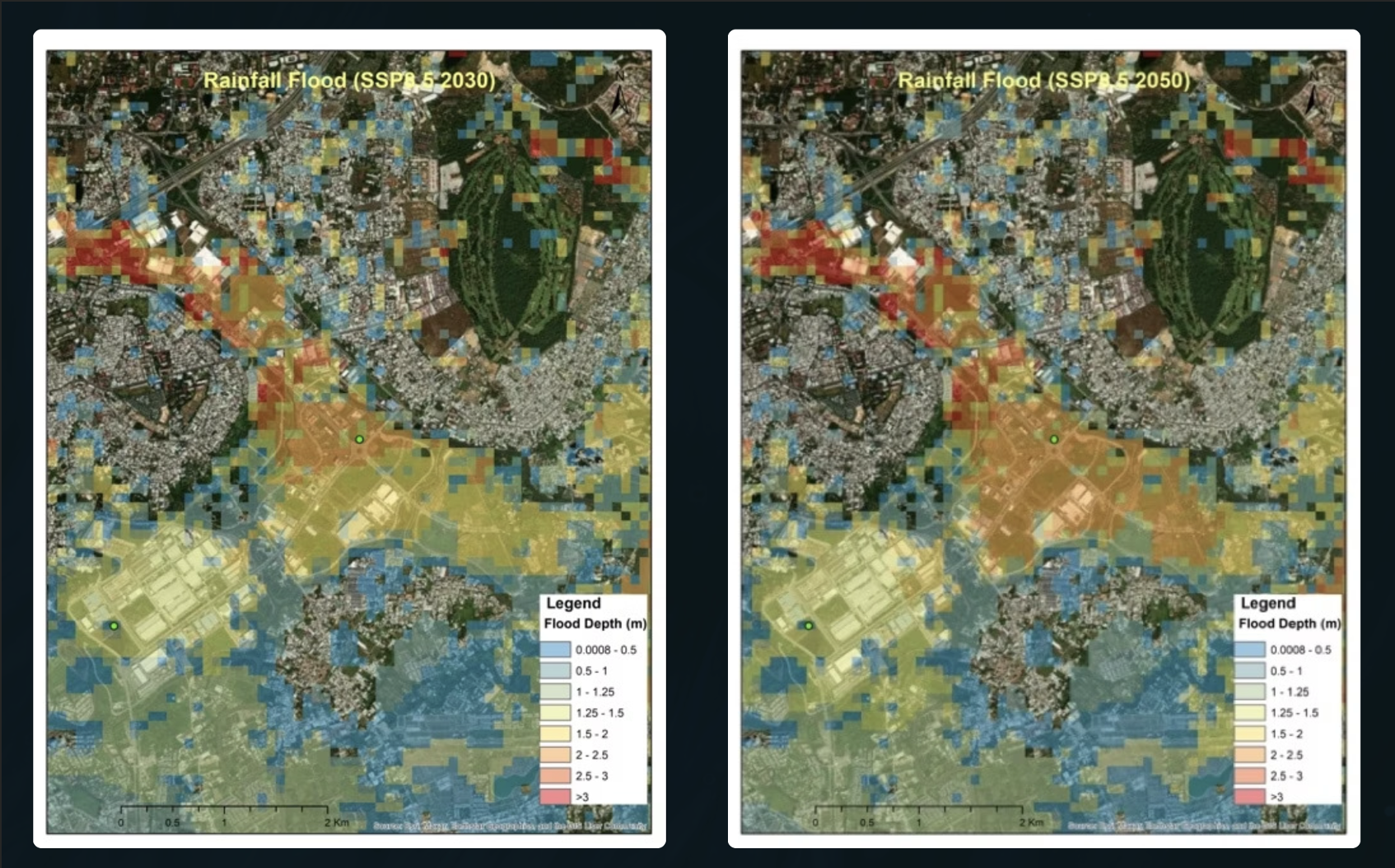
The flood maps above demonstrate the importance of investigating surrounding area risks to infrastructure, as flooding can disrupt the data center itself, in addition to critical supporting systems like power supply, transportation access, and telecommunications.
Source: Intensel Limited
Climate-resilient data center infrastructure
Data centers in Asia are thirsty and feeling the heat.
Extreme weather and power reliability in the region, and specifically in Southeast Asia, are significant risks to meeting the growing data center demand, resulting in potential losses and lower margins and presenting a myriad of operational risks. This ‘‘twin challenge’’ of power availability and climate resilience requires proactive planning and investment.
To ensure climate resilience, data centers require targeted climate adaptation investments to mitigate current and future extreme weather events. These tailored approaches not only protect operations but can also lead to insurance premium de-risking, potentially offsetting the costs of adaptation investments over time.
Forward-looking climate risk assessments that account for changes in hazard risk levels over time and future emissions scenarios will be necessary to inform location strategies during the planning and development of new infrastructure. This will also support capital allocation decision-making to help avoid future losses and build climate-resilient infrastructure.
This article was written by Ash Hegland, COO at Intensel Limited. Learn more about Intensel here.